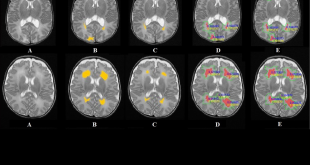Pierre Comon’s research focuses on a subject that is as simple as it is complex: how to find a single solution to a problem. From environment to health and telecommunications, this researcher in information science at GIPSA-Lab is taking on a wide range of issues. Winner of the IMT-Académie des Sciences 2018 Grand Prix, he juggles mathematical abstraction and the …
Read More »Search Results for: algorithm
The legal professions coping with the challenge of digital technology
The first two issues of Enjeux numériques/Digital issues focused on artificial intelligence (AI) and big data. These topics reappear in this new issue devoted to the impact of digital technology on the legal professions at a time when big data and advanced algorithms are two major factors in the pursuit of the digital transformation of our society and of jobs. …
Read More »AI in healthcare for the benefit of individuals and society?
Article written by Christian Roux (Director of Research and Innovation at IMT), Patrick Duvaut (Director of Innovation at IMT), and Eric Vibert (professor at Université Paris-Sud/Université Paris Saclay, and surgeon at Hôpital Paul Brousse (AP-HP) in Villejuif). How can artificial intelligence be built in such a way that it is humanistic, explainable and ethical? This question is central to discussions …
Read More »PAPAYA: a European project for a confidential data analysis platform
EURECOM is coordinating the three-year European project, PAPAYA, launched on May 1st. Its mission: enable cloud services to process encrypted or anonymized data without having to access the unencrypted data. Melek Önen, a researcher specialized in applied cryptography, is leading this project. In this interview she provides more details on the objectives of this H2020 project. What is the …
Read More »Superpixels for enhanced detection of breast cancer
Deep learning methods are increasingly used to aid medical diagnosis. At IMT Atlantique, Pierre-Henri Conze is taking part in this drive to use artificial intelligence algorithms for healthcare by focusing on breast cancer. His work combines superpixels defined on mammograms and deep neural networks to obtain better detection rates for tumor areas, thereby limiting false positives. In France, one …
Read More »The End of Web Neutrality: The End of the Internet?
Hervé Debar, Télécom SudParis – Institut Mines-Télécom, Université Paris-Saclay At end 2017, a decision issued by the Federal Communication Commission (FCC), the American agency responsible for regulating the American telecom sector (equivalent of the French ARCEP and the European BEREC), has changed the status of American Internet service providers. However, this change cannot take place in Europe due to the …
Read More »Hardware attacks, a lingering threat for connected objects
Viruses, malware, spyware and other digital pathologies are not the only way computer systems’ vulnerabilities are exploited. Hardware attacks are not as well-known as these software attacks, but they are just as dangerous. They involve directly exploiting interaction with a system’s electronic components. These sneak attacks are particularly effective against connected objects. Jean-Max Dutertre’s team at Mines Saint-Étienne is committed …
Read More »A digital twin of the aorta to prevent aneurysm rupture
15,000 Europeans die each year from rupture of an aneurysm in the aorta. Stéphane Avril and his team at Mines Saint-Étienne are working to better prevent this. To do so, they develop a digital twin of the artery of a patient with an aneurysm. This 3D model makes it possible to simulate the evolution of an aneurysm over time, and …
Read More »Mathematical tools for analyzing the development of brain pathologies in children
Magnetic resonance imaging (MRI) enables medical doctors to obtain precise images of a patient’s structure and anatomy, and of the pathologies that may affect the patient’s brain. However, to analyze and interpret these complex images, radiologists need specific mathematical tools. While some tools exist for interpreting images of the adult brain, these tools are not directly applicable in analyzing brain …
Read More »AI, an issue of economy and civilization?
This is the first issue of the new quarterly of the series Annales des Mines devoted to the digital transition. The progress made using algorithms, the new computational capacities of devices (ranging from graphic cards to the cloud), and the availability of huge quantities of data combine to explain the advances under way in Artificial Intelligence. But AI is not …
Read More » I'MTech L'actualité scientifique et technologique de l'IMT
I'MTech L'actualité scientifique et technologique de l'IMT









